tragedy
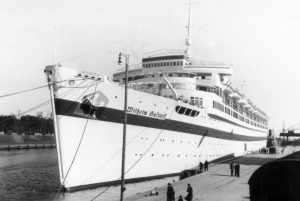 When we think of disasters at sea, Titanic is the first ship that most likely comes to mind, and while Titanic was a terrible tragedy, it was not the worst disaster at sea, by any means. It is amazing to me, however, that some of the others are never talked about at all, and in fact, you may have never heard about them. Titanic had a capacity of 3547 people, but was only carrying 2223 with passengers and crew. The loss of more than 1500 lives, was horrific to be sure, but it was not the worst disaster at sea in history. That distinction goes to The Wilhelm Gustloff.
When we think of disasters at sea, Titanic is the first ship that most likely comes to mind, and while Titanic was a terrible tragedy, it was not the worst disaster at sea, by any means. It is amazing to me, however, that some of the others are never talked about at all, and in fact, you may have never heard about them. Titanic had a capacity of 3547 people, but was only carrying 2223 with passengers and crew. The loss of more than 1500 lives, was horrific to be sure, but it was not the worst disaster at sea in history. That distinction goes to The Wilhelm Gustloff.
The Wilhelm Gustloff was built by the Blohm & Voss shipyards. It measured 684 feet 1 inch long by 77 feet 5 inches wide with a capacity of 25,484 gross register tons. The ship was launched on 5 May 1937. Originally the ship was intended to be named Adolf Hitler, but was named after Wilhelm Gustloff, a leader of the National Socialist Party’s Swiss branch, who had been assassinated by a Jewish medical student in 1936. Hitler decided on the name change after sitting next to Gustloff’s widow during his memorial service. I guess Hitler managed to do a few nice things in his horrid lifetime. The ship was the first purpose-built cruise liner for the German Labour Front or Deutsche Arbeitsfront, 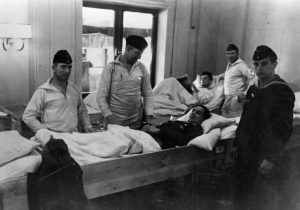 DAF and used by subsidiary organization Kraft durch Freude, KdF meaning Strength Through Joy. The purpose of the ship was to provide recreational and cultural activities for German functionaries and workers, including concerts, cruises, and other holiday trips, and as a public relations tool, to present “a more acceptable image of the Third Reich.” She was the flagship of the KdF cruise fleet, her last civilian role, until the spring of 1939.
DAF and used by subsidiary organization Kraft durch Freude, KdF meaning Strength Through Joy. The purpose of the ship was to provide recreational and cultural activities for German functionaries and workers, including concerts, cruises, and other holiday trips, and as a public relations tool, to present “a more acceptable image of the Third Reich.” She was the flagship of the KdF cruise fleet, her last civilian role, until the spring of 1939.
The Wilhelm Gustloff became a German hospital ship from September 1939 to November 1940, with its official designation being Lazarettschiff. Then, beginning on 20 November 1940, the medical equipment was removed from the ship and she was repainted from the hospital ship colors of white with a green stripe to standard naval grey. As a consequence of the British blockade of the German coastline, she was used as a barracks ship for approximately 1,000 U-boat trainees of the 2nd Submarine Training Division in the port of Gdynia, which had been occupied by Germany and renamed Gotenhafen. The ship was based near Danzig. Then, as things started to go from bad to worse during World War II, the Germans decided that they needed to evacuate as many people as possible from Courland, East Prussia and Danzig, West Prussia. On  January 30, 1945 during Operation Hannibal, which was the naval evacuation of German troops and civilians from Courland, East Prussia, and Danzig, West Prussia as the Soviet Army advanced. The Wilhelm Gustloff’s final voyage was to evacuate German refugees and military personnel as well as technicians who worked at advanced weapon bases in the Baltic from Gdynia, then known to the Germans as Gotenhafen, to Kiel. The ship’s capacity was 1465, but because they were evacuating people, about 9,400 people were onboard. The ship was hit by a torpedo from Soviet submarine S-13 in the Baltic Sea. It quickly sank, taking all 9,400 people with it. The loss of the Wilhelm Gustloff remains the worst disaster at sea in history.
January 30, 1945 during Operation Hannibal, which was the naval evacuation of German troops and civilians from Courland, East Prussia, and Danzig, West Prussia as the Soviet Army advanced. The Wilhelm Gustloff’s final voyage was to evacuate German refugees and military personnel as well as technicians who worked at advanced weapon bases in the Baltic from Gdynia, then known to the Germans as Gotenhafen, to Kiel. The ship’s capacity was 1465, but because they were evacuating people, about 9,400 people were onboard. The ship was hit by a torpedo from Soviet submarine S-13 in the Baltic Sea. It quickly sank, taking all 9,400 people with it. The loss of the Wilhelm Gustloff remains the worst disaster at sea in history.
 By the late 1960s, space travel had become a pretty common story for the people of the United States. NASA had enjoyed a relatively accident free space travel history, having only lost three astronauts, and that was a fire on the launch pad during training. So, when it came to Apollo 13 going to the Moon, which had been done twice before, the networks decided that it was boring, and opted not to televise the program…until disaster changed everything. For me, it seems impossible that anyone could think that space flight is boring, but someone at the top ranking position in the media, had made an executive decision, so that was the end of it.
By the late 1960s, space travel had become a pretty common story for the people of the United States. NASA had enjoyed a relatively accident free space travel history, having only lost three astronauts, and that was a fire on the launch pad during training. So, when it came to Apollo 13 going to the Moon, which had been done twice before, the networks decided that it was boring, and opted not to televise the program…until disaster changed everything. For me, it seems impossible that anyone could think that space flight is boring, but someone at the top ranking position in the media, had made an executive decision, so that was the end of it.
On April 11, 1970, Apollo 13, the third manned lunar landing mission was launched from Cape Canaveral, Florida, carrying astronauts Jim Lovell, Jack Swigert, and Fred Haise. If you’ve ever seen the movie “Apollo 13”, you will know that Jack Swigert had replaced Ken Mattingly, who had been exposed to the German measles. Ken would never get the measles, but rather was a part of the NASA team effort that worked to bring the stranded astronauts back home safely. The crew planned to land on the Fra Mauro highlands of the moon, but two days into the mission, disaster struck when oxygen tank number 2 blew up in the spacecraft, after Jack Swigert was told to preform a cryo stir procedure to the oxygen tanks…a routine maintenance procedure. Then, Swigert uttered those now famous words, “Houston, we’ve had a problem here.” After evaluation, it was determined that the normal supply of oxygen, electricity, light, and water had been disrupted. Their mission to land on the Moon was over, and now they had a new mission…survival!!
Suddenly the news media was very interested in this mission. A successful mission was boring and not news worthy at all, but one in which fatalities might occur, is very interesting. Sad really…when you think about it. The television stations were supposed to broadcast a segment the crew did about life in space, but while the crew did their segment, the stations decided not to broadcast it for lack of interest. Nine minutes later, when disaster struck, everyone was suddenly very interested. I guess I just don’t understand why we would rather watch news about a disaster, than a successful space mission. I don’t think there is anything common about space travel, and yet, it goes on a lot in our world, completely without notice.
Once the disaster began, the world watched anxiously, praying for the safe return of these brave men. The broken vehicle could not make the trip, and they would have to use the lunar landing module, Oddesy to get them home. They limped along, making the necessary “MacGyver” like connections and adjustments to allow them to have enough oxygen. They made “controlled burns” using the Earth as a guide. Not very controlled at all. It took tremendous effort on the parts of many people, but it all paid off, when on April 17, tragedy turned to triumph as the Apollo 13 astronauts touched down safely in the Pacific Ocean. It was a successful failure, in that no lives were lost.
 Every time disaster strikes, it seems like we always remember where we were and what we were doing the moment we found out about it. Moments like September 11, 2001, the Kennedy assassinations, Reagan’s shooting, and for me, the Space Shuttle Challenger explosion, are permanently imprinted on my mind. It had been so well televised. It was to be the first time an American civilian was going into space, and she was a teacher. It was an exciting event for America, and especially for the schools and the school children, who felt like they were suddenly center stage within the space program. The nation watched as the Teacher in Space candidates went through the paces to decide which teacher would be chosen. Finally the decision was made, and out of all the candidates, a woman, Christa McAuliffe stood alone as the chosen one. It was exciting for her, the school where she taught, and her family. It was excitement mixed with anxiousness, because there was always that element of danger, that you know is possible, but you never really believe would come to pass…until it does.
Every time disaster strikes, it seems like we always remember where we were and what we were doing the moment we found out about it. Moments like September 11, 2001, the Kennedy assassinations, Reagan’s shooting, and for me, the Space Shuttle Challenger explosion, are permanently imprinted on my mind. It had been so well televised. It was to be the first time an American civilian was going into space, and she was a teacher. It was an exciting event for America, and especially for the schools and the school children, who felt like they were suddenly center stage within the space program. The nation watched as the Teacher in Space candidates went through the paces to decide which teacher would be chosen. Finally the decision was made, and out of all the candidates, a woman, Christa McAuliffe stood alone as the chosen one. It was exciting for her, the school where she taught, and her family. It was excitement mixed with anxiousness, because there was always that element of danger, that you know is possible, but you never really believe would come to pass…until it does.
I was disappointed that I had to bowl on the morning that had been chosen for the launch of the Challenger. I had hoped that I could catch some of it on the television set the bowling alley had. As secretary of the league, I  had duties to perform when I got there, but I was immediately approached by one of the bowlers, who said, “Did you hear that the space shuttle exploded?” It was so unthinkable, that my mind first thought that it exploded before anyone was in it, but deep down, I knew that this was a huge disaster. I prayed that some of them would live through it, while knowing in my heart, that they could not have lived through it. It was hard to bowl that day, but there was nothing else we could do. The televisions were on, and we watched as the explosion was played over and over again. Then we went home, and watched more of it at home. Sometimes, I think that people have a tendency to think that if they watch a disaster over and over, that maybe somehow it will have a different outcome…as irrational as that sounds.
had duties to perform when I got there, but I was immediately approached by one of the bowlers, who said, “Did you hear that the space shuttle exploded?” It was so unthinkable, that my mind first thought that it exploded before anyone was in it, but deep down, I knew that this was a huge disaster. I prayed that some of them would live through it, while knowing in my heart, that they could not have lived through it. It was hard to bowl that day, but there was nothing else we could do. The televisions were on, and we watched as the explosion was played over and over again. Then we went home, and watched more of it at home. Sometimes, I think that people have a tendency to think that if they watch a disaster over and over, that maybe somehow it will have a different outcome…as irrational as that sounds.
This whole disaster gave me a different view of the space shuttle, and so when we had the opportunity to visit the Johnson Space Center in Houston, Texas, I found the view of the space shuttle, and all it’s inner workings to be the most interesting. Standing inside the shuttle display, I felt a mixture of excitement and a little dread. It wasn’t that I was concerned for me, but rather that the Challenger’s lost astronauts came back to my mind. I felt a tiny bit of their excitement, and yet I knew that they would never get to fully live their dream, but would die  tragically just 73 second into the flight. Just a little over a minute into their dream. So close, and yet so suddenly it was over…forever. There would be no second chance for them, and this event would bring a lasting emptiness to their families. Events like these scar the people of nation. We may not think of them every day, but when we are reminded of them, such as today, on the 29th anniversary of the event, we can’t help but to be taken back to the day of the event. We can vividly picture each and every second of it, knowing that the loss of life is enormous…knowing that not only are those who died, gone from their families now, but the families are left to pick up the pieces. And we are left remembering exactly where we were when we heard the tragic news.
tragically just 73 second into the flight. Just a little over a minute into their dream. So close, and yet so suddenly it was over…forever. There would be no second chance for them, and this event would bring a lasting emptiness to their families. Events like these scar the people of nation. We may not think of them every day, but when we are reminded of them, such as today, on the 29th anniversary of the event, we can’t help but to be taken back to the day of the event. We can vividly picture each and every second of it, knowing that the loss of life is enormous…knowing that not only are those who died, gone from their families now, but the families are left to pick up the pieces. And we are left remembering exactly where we were when we heard the tragic news.
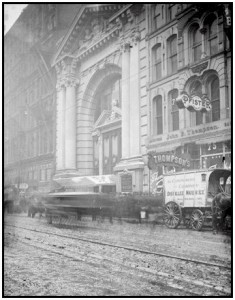 Every day, we benefit from safety measures that have been put in place as a result of a need, or more often a tragedy, that occurred in the past. We give very little thought to things like fire drills, earthquake drills, or even the fire extinguisher on the wall in buildings. We don’t normally think about the fire exit, unless we are looking for the way out of a building and find that this exit is only to be used in case of a fire. I suppose that the reason we don’t think of these things is that we expect the place we are in to be a safe place. There are regulations surrounding the public use of buildings that require that the building meet a certain standard of safety, and most often they do…these days anyway.
Every day, we benefit from safety measures that have been put in place as a result of a need, or more often a tragedy, that occurred in the past. We give very little thought to things like fire drills, earthquake drills, or even the fire extinguisher on the wall in buildings. We don’t normally think about the fire exit, unless we are looking for the way out of a building and find that this exit is only to be used in case of a fire. I suppose that the reason we don’t think of these things is that we expect the place we are in to be a safe place. There are regulations surrounding the public use of buildings that require that the building meet a certain standard of safety, and most often they do…these days anyway.
These safety lessons were not so pleasant to learn for those who came before us and who didn’t survive. Such was the case on December 30, 1903, when the Iroquois Theater in Chicago caught fire and killed 602 people, 572 inside the theater, with the rest dying of the injuries received in the fire. That total included 212 children. You see, the Iroquois Theater was hosting hundreds of adults and school children to a Holiday performance of a play starring the popular comedian, Eddie Foy. The sad thing is that the theater was thought to be fireproof. In reality it was a deathtrap, due to so many safety violations. As a result, the lives of many families were devastated. As I looked at the list of victims, I can’t say that I ran across any I knew to belong in my family tree, but I could be wrong on that too. My family and that of my husband, Bob, spent a lot of time in the Great  Lakes area, so it is entirely possible that my own family lost people due to this tragedy as well.
Lakes area, so it is entirely possible that my own family lost people due to this tragedy as well.
These days, our children think nothing of a fire alarm going off in school. They have several of them a year. when the alarm goes off, they simply follow their training and line up to leave the building. If there were a fire, they would most likely not know it until they were not allowed to go back into the building. Children in earthquake prone areas at taught exactly what to do if the room starts shaking, and they respond automatically, often saving their lives.
The problem with the Iroquois Theater fire, was as simple as the problem with the Titanic. People didn’t think the building could possible burn, or the ship sink. The Iroquois Theater was only open five weeks before it’s total destruction. As a result, lives were lost. In my reading of this tragedy, I found that while the architect wanted every possible safety measure taken, costs had been cut and therefore, the fireproof theater everyone thought they were in, simply did not exist. The theater was over crowded by 400 people, at 2,000 people in a theater designed to hold 1,600. They stairway to the fire escape hadn’t been finished yet. exit doors had been designed to be pulled open, and with the crowd of fear stricken people, the press was to much, and the escape, completely blocked. Iron gates closing off some of the stairways were locked, and people tried jumping out the window…to their deaths unfortunately. In some  places the bodies were stacked 10 high with people attempting to crawl over each other to get out. In desperation the fire department set up a bridge of sorts to get people out. Some got out, some didn’t.
places the bodies were stacked 10 high with people attempting to crawl over each other to get out. In desperation the fire department set up a bridge of sorts to get people out. Some got out, some didn’t.
I don’t know why we humans always seem to think that something we build could be indestructible, when in reality, much of what we build is, in one way or another, flawed. I think that one of the best things we can do for our families, is to make sure they all know how to get out of a building safely. We can hope that the architect, contractor, workers, and inspectors all did their job properly, but we must remember that they are only human too, and mistakes can be made. If people know not to panic, they can get out safely more times than not, but panic…most often results in tragedy. And that is what happened in the Iroquois Theater in Chicago on December 30, 1903…panic and a complete disregard for the elementary rules of safety.
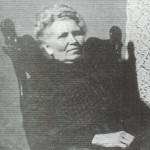 My Great Great Aunt Ida Spencer Brown Nass, married Andrew Alfred Brown on October 1, 1872. They had two sons, Elmer Ellsworth and Andrew Alfred. It is unknown what happened to Ida’s first husband, but she later married Sjur Johannesson Nass, who went by Samuel, and they had two daughters, Ellen and Ethel.
My Great Great Aunt Ida Spencer Brown Nass, married Andrew Alfred Brown on October 1, 1872. They had two sons, Elmer Ellsworth and Andrew Alfred. It is unknown what happened to Ida’s first husband, but she later married Sjur Johannesson Nass, who went by Samuel, and they had two daughters, Ellen and Ethel.
Ida and Andrew’s son Andrew Alfred, who usually went by A.A. Brown, married a woman names Emma Caroline Haessler. Their marriage was filled with love, and blessed with ten children, Gertrude Flora, Alwyn A, Emma Henrietta, John Henry “Johnie”, Bessie, Warren Winston, Elizabeth Ida, Edward Spencer, James Robert, and Fredrick Valden. While their lives were happy, they were not long. Emma passed away on October 31, 1918, leaving Andrew to raise their seven children…a difficult task with small families, but much harder for a man with seven children. Andrew was doing quite well with the task, even though his oldest daughter, Gertrude, who had most likely been a big help, was married on April 20, 1920, leaving him with one less helping hand around the house. Their son Alwyn had preceded his mother in death on June 10, 1918, as had Johnie on September 12, 1905 at 3 years of age, and Bessie on September 10, 1905 at 3 months of age.
On January 29, 1921, tragedy would again strike the family, when Andrew was killed in The Great Olympic Blowdown. The storm, which was one of the worst in Washington state  history, came in off the coast at around 8:00 am on January 29, bringing with it, hurricane force winds estimated at 125 to 150 mph. The Forest Service estimated the loss of timber at several billion board feet. The loss of life was one, Andrew A Brown, who was an engineer working at the Anderson-Middleton Lumber Mill in Aberdeen. He was killed instantly when a sudden gust blew down a smokestack pinning him against a broken steam pipe and scalding him to death.
history, came in off the coast at around 8:00 am on January 29, bringing with it, hurricane force winds estimated at 125 to 150 mph. The Forest Service estimated the loss of timber at several billion board feet. The loss of life was one, Andrew A Brown, who was an engineer working at the Anderson-Middleton Lumber Mill in Aberdeen. He was killed instantly when a sudden gust blew down a smokestack pinning him against a broken steam pipe and scalding him to death.
Once again, a grieving Gertrude, who had married Patrick Mint House, stepped in, taking the remaining six children into their home and raising them as their own. Emma was 21 years old by then, so I don’t know if she lived with her sister or not, but the rest of the children ranged in ages from 4 years to 14 years. The littlest ones would most likely not even remember their parents very clearly in the coming years. Their parents hadn’t shared memories of their childhood even with their eldest daughter, Gertrude, so the memories the younger children would have would only be what little bits and pieces she could tell them of her childhood years with their parents. I have to commend Gertrude and Patrick for their heroic and selfless act of taking in her siblings. I can only imagine how hard that must have been for them. In looking through the genealogy records, I can’t find any evidence of Gertrude and Patrick having any children of their own. I don’t know 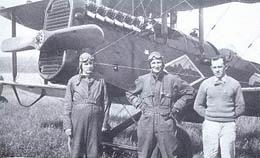 if that was because they were unable to have children or that they had a ready made family. Either way, I find that very sad, because I think they must have been wonderful, loving parents. I imagine that it was an enormous job to take on six children…especially when one is only 23 years old herself. Still, they were family and she loved them. She could not bear to have them go to an orphanage, so she and her husband did what they had to do, and raised her siblings in a happy, loving home…an act of kindness the children never forgot.
if that was because they were unable to have children or that they had a ready made family. Either way, I find that very sad, because I think they must have been wonderful, loving parents. I imagine that it was an enormous job to take on six children…especially when one is only 23 years old herself. Still, they were family and she loved them. She could not bear to have them go to an orphanage, so she and her husband did what they had to do, and raised her siblings in a happy, loving home…an act of kindness the children never forgot.

